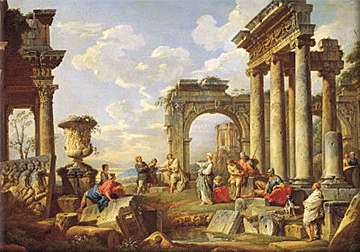ROMAN REVIVAL 1880 Micro Mosaic Bangle Bracelet In Solid 19Kt Yellow Gold
Roman revival grand tour bangle bracelet.
This is a beautiful historical bangle bracelet, created during the Victorian-Grand Tour era, in Rome Italy between the 1870 and 1880. The rare bracelet is very substantial, bold and was carefully crafted with Roman and Etruscan revival patterns in solid rich yellow gold of 19 karats and embellished with intricate three dimensional panels, which are decorated with micro-mosaic, depicting Loving Swans and flowers bouquets, all with neo-classical frames. The micro mosaics panels are very well executed, of Italian origin and made up in Rome with thousands of tiny pieces carved from natural hardstones, such; blue lapis lazuli, red coral, maroon jasper, black onyx, green malachite and cream nacre. The bracelet is fitted with concealed three barrels hinge and a long screwed pin, that function as a safety lock.
The Swan, Symbol Of Love
Swans are present in many European fairy tales, symbolizing chastity (partly because of their white plumage), artistry, and beauty. On a related note, swans are associated with fidelity, loyalty in marriage, and monogamy, because they mate for life. In Greek art, beginning at least in the Archaic period, Aphrodite was sometimes depicted with a swan, a symbol of good health, music, divination, and grace. In Roman times, Latin poets, such as Ovid and Horace, also referred to the goddess in her chariot being drawn through the air by swans.
Weight: 116.2 Grams, (74.5 Dwt).
Size: The inside circumference is 7 Inches, will fit very comfortable to a wrist up to 6.5 Inches, (16.5 Cm).
Measurements: The width is 52 mm (2.05 Inches).
Hallmarks: Unmarked, electronically tested for gold.
History Behind This Piece
Between the 1820 and 1890, ancient cities were discovered, such as Troy, Pompeii and Alexandria. Archaeological excavations in Egypt, Greece and Rome, discovered artistic pieces of these ancient cultures. These fabulous discoveries, stimulated cultural trips to these countries, popularly called "grand tour". Being the case that the enthusiast visitors bring back small objects, like souvenirs to be assembled into jewelry. The starting point of these trips were in the cities of Rome and Venice. this is why the craftsmen of these cities created small and interesting objects with ancient characteristics like this brooch.

Revival jewelry
The revival styles from the renaissance and Middle Ages, begun in the 1850’s, The Renaissance and Egyptian revivals were joined by a classical revival of Greek and Etruscan styles to conform a new aesthetic. As a result of the construction work on the Suez Canal in the mid-1860’s and the Egyptian excavations of Auguste Mariette and the resultant exhibit of Egyptian treasures at the exposition Universelle in 1867, a fascination for all things Egyptian and ancient cultures developed. Many nineteenth-century jewelers, were inspired to create their own versions of these ancient pieces, hence “Etruscan Revival”, the most famous being the House of Castellani. Characteristics of Etruscan style jewelry include use of high karat gold and semi-precious stones like lapis, malachite and agates, and most distinguishingly, the use of intricate filigree and granulation.
Collateral: This bracelet is accompanied by a presentation jewelry box.
Condition: The overall condition of this bracelet is good. Show normal wear with some dents and marks that do not detract. The little mosaics pieces are secured in their settings. This rare bracelet has been carefully inspected to guarantee the condition and authenticity.
INVENTORY REF: B090224TNNM/2.794


















